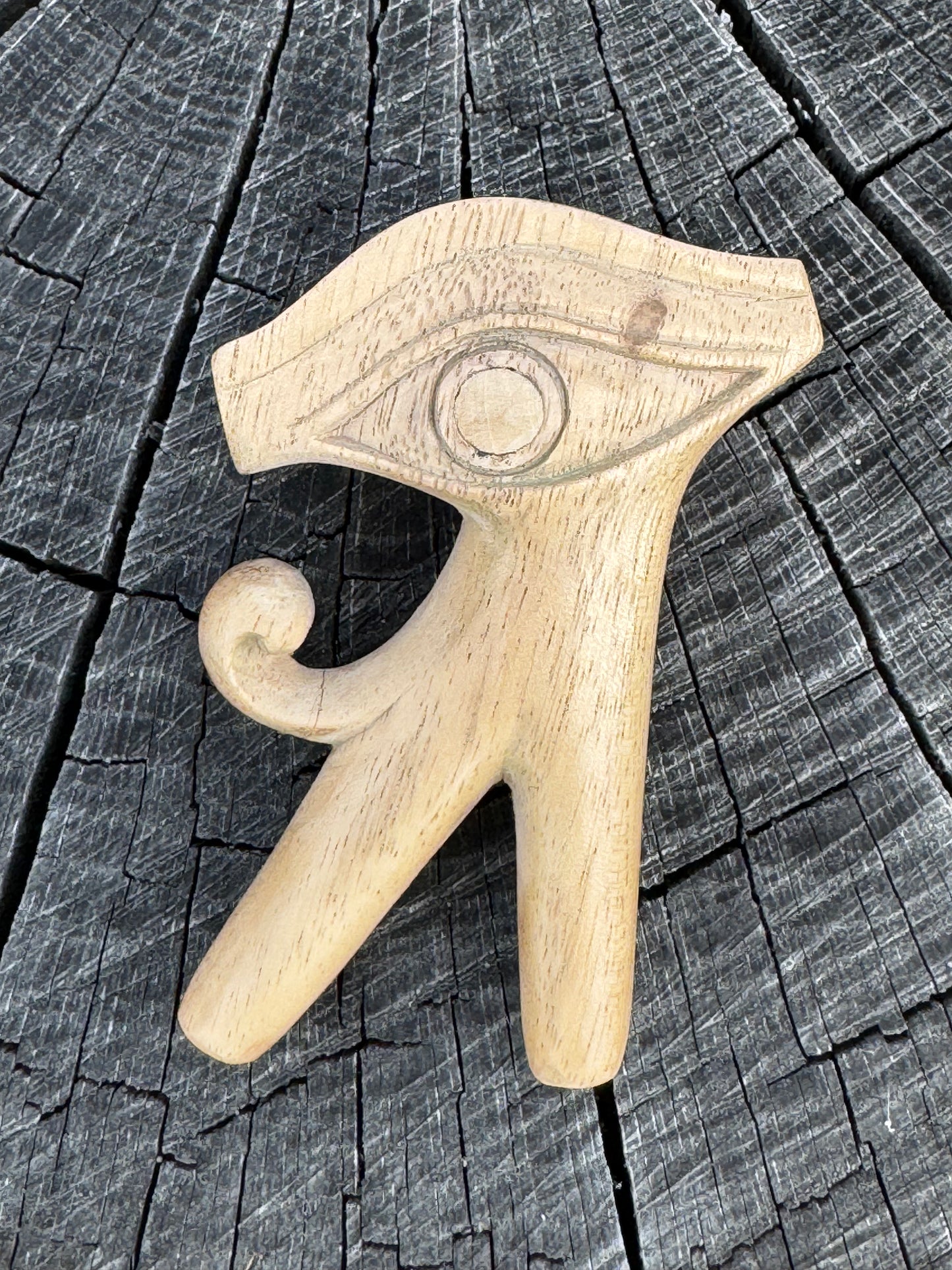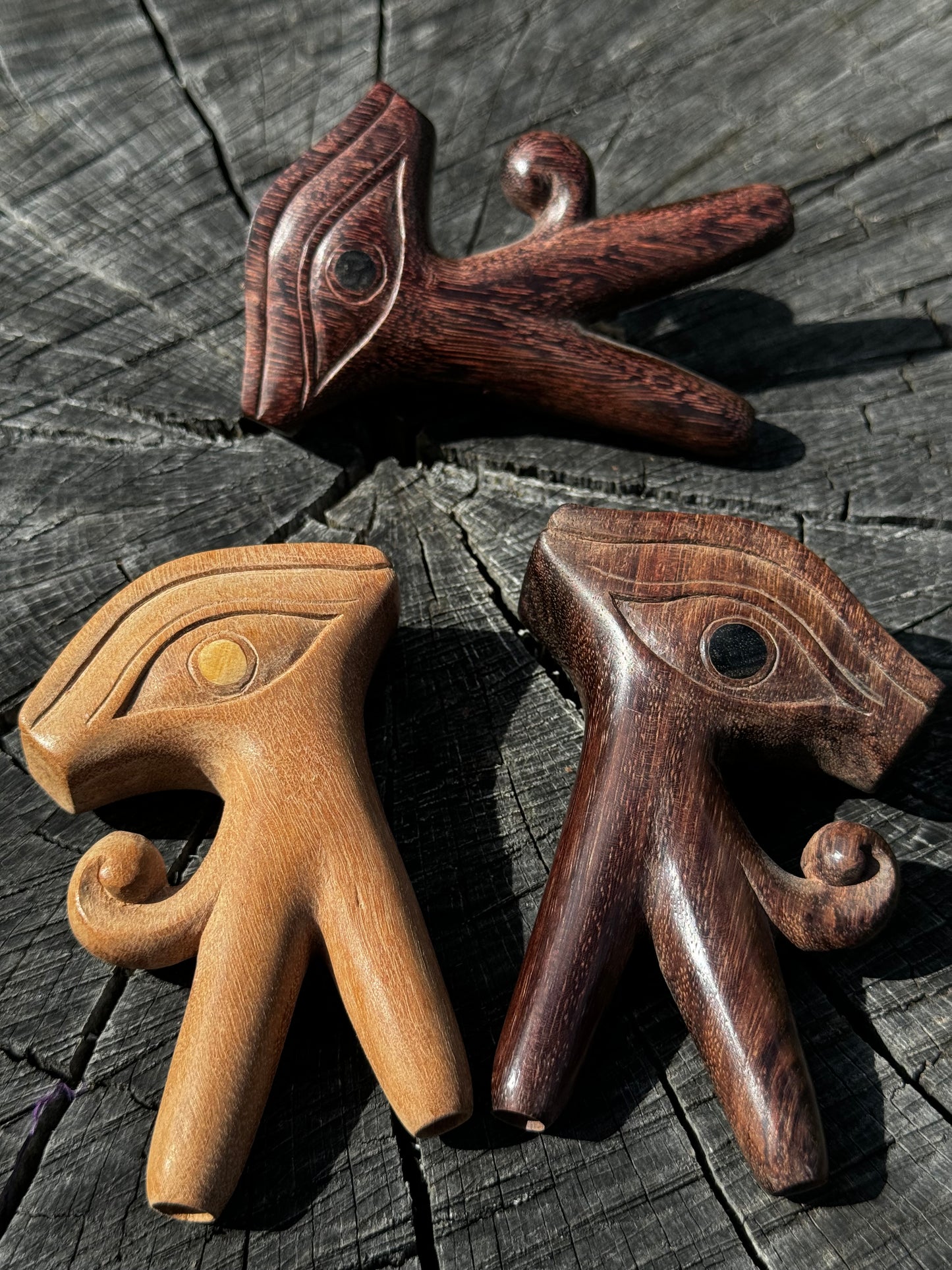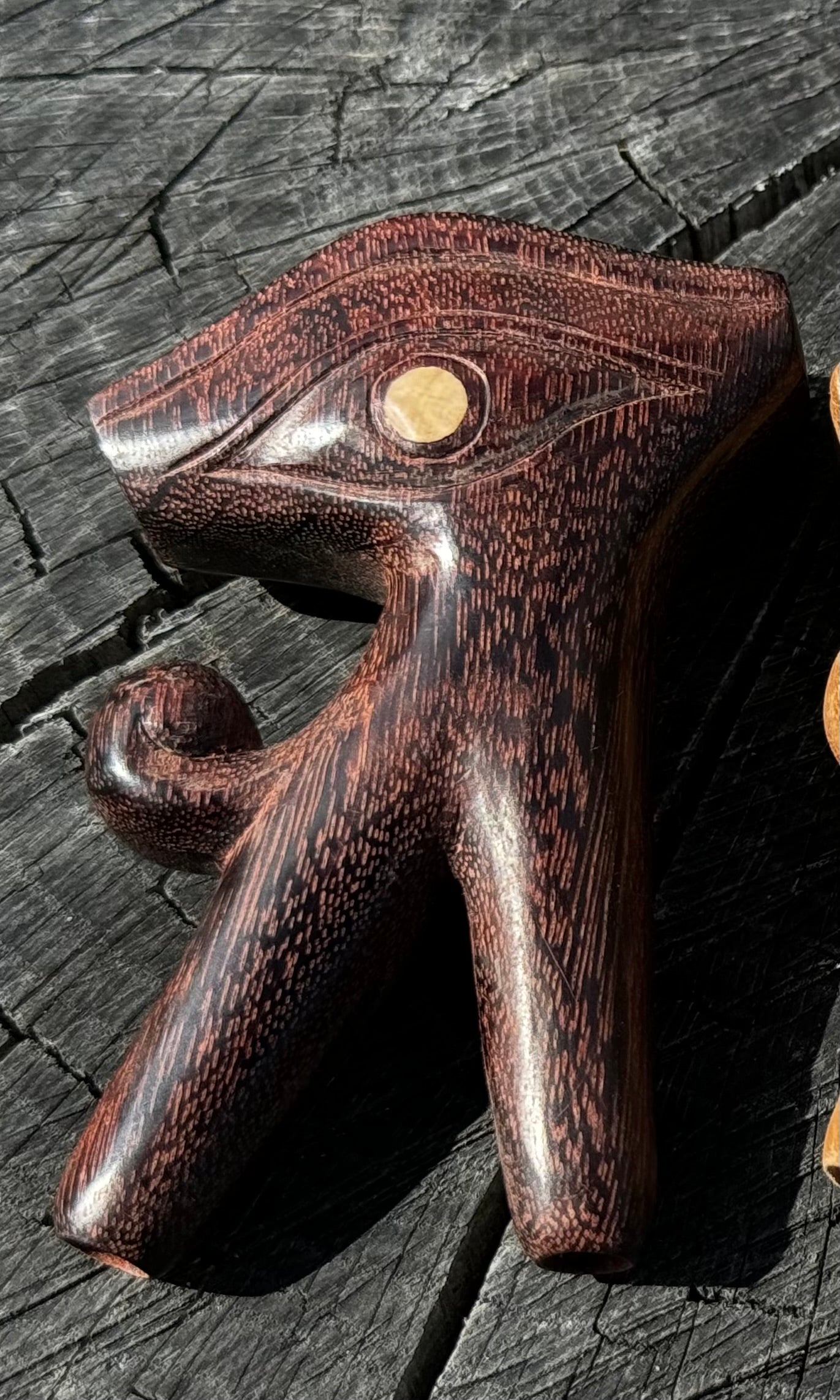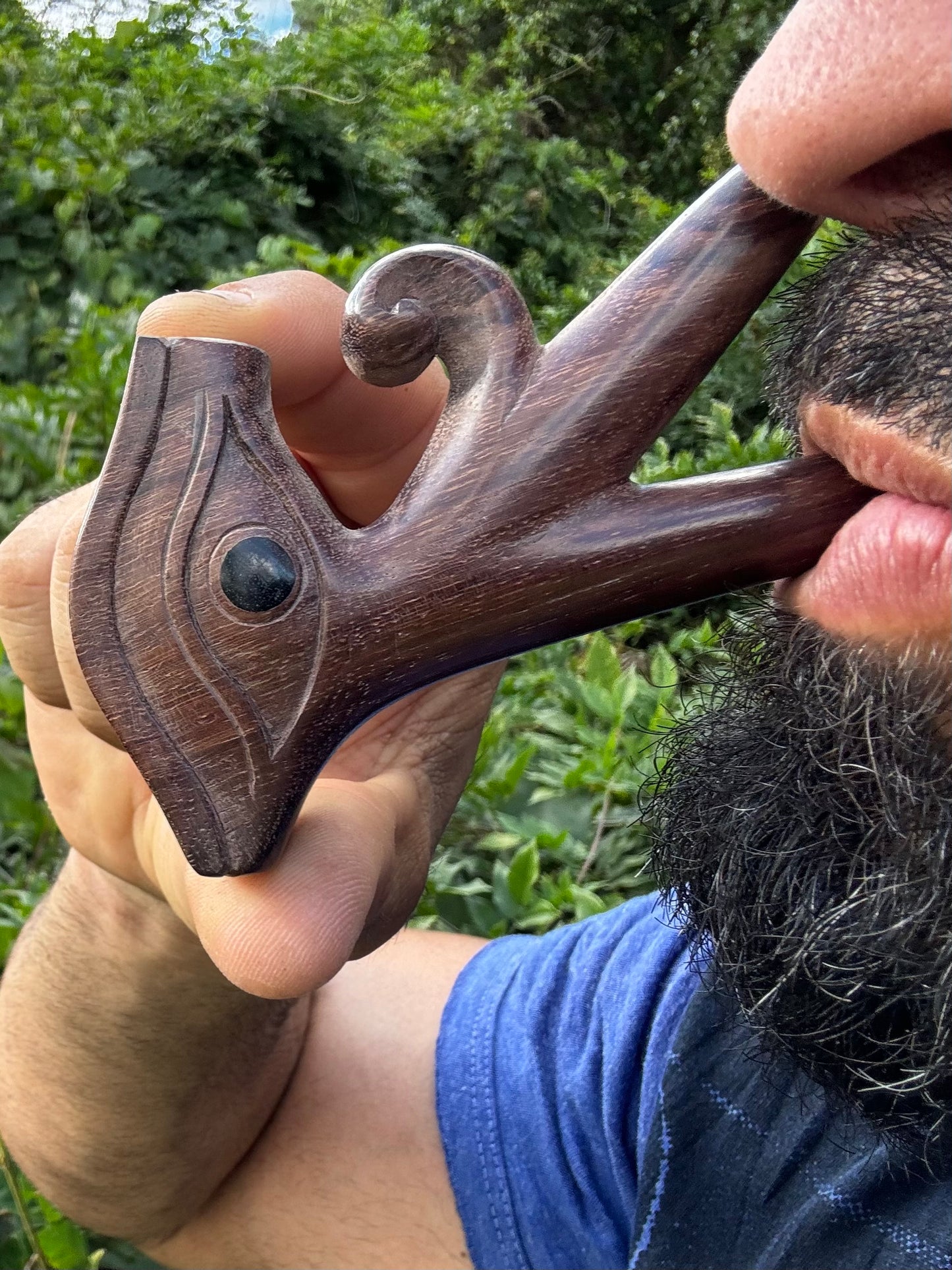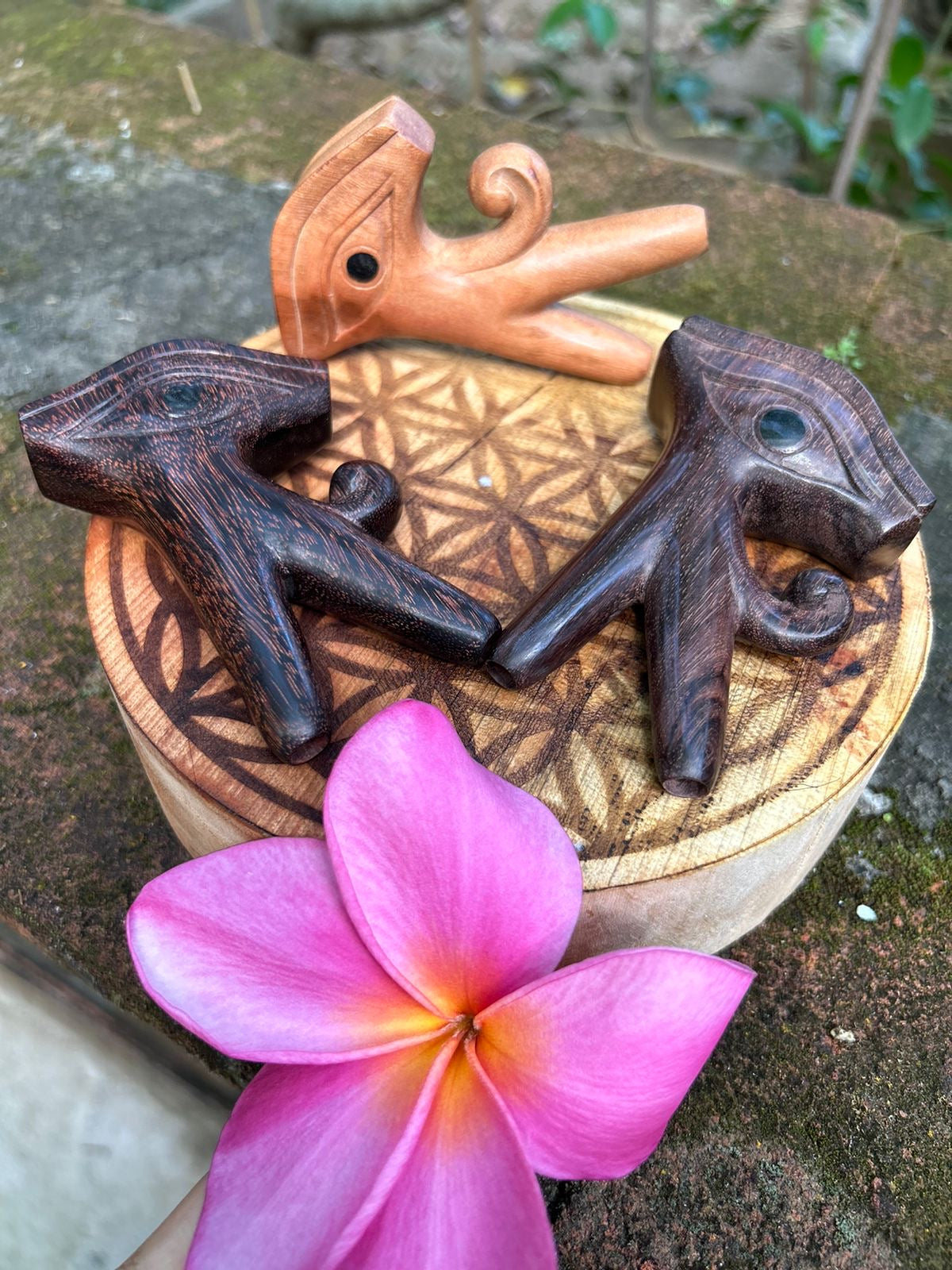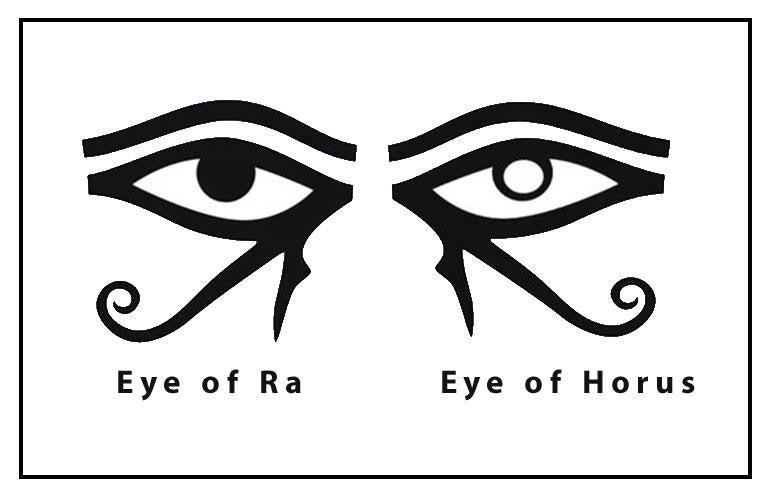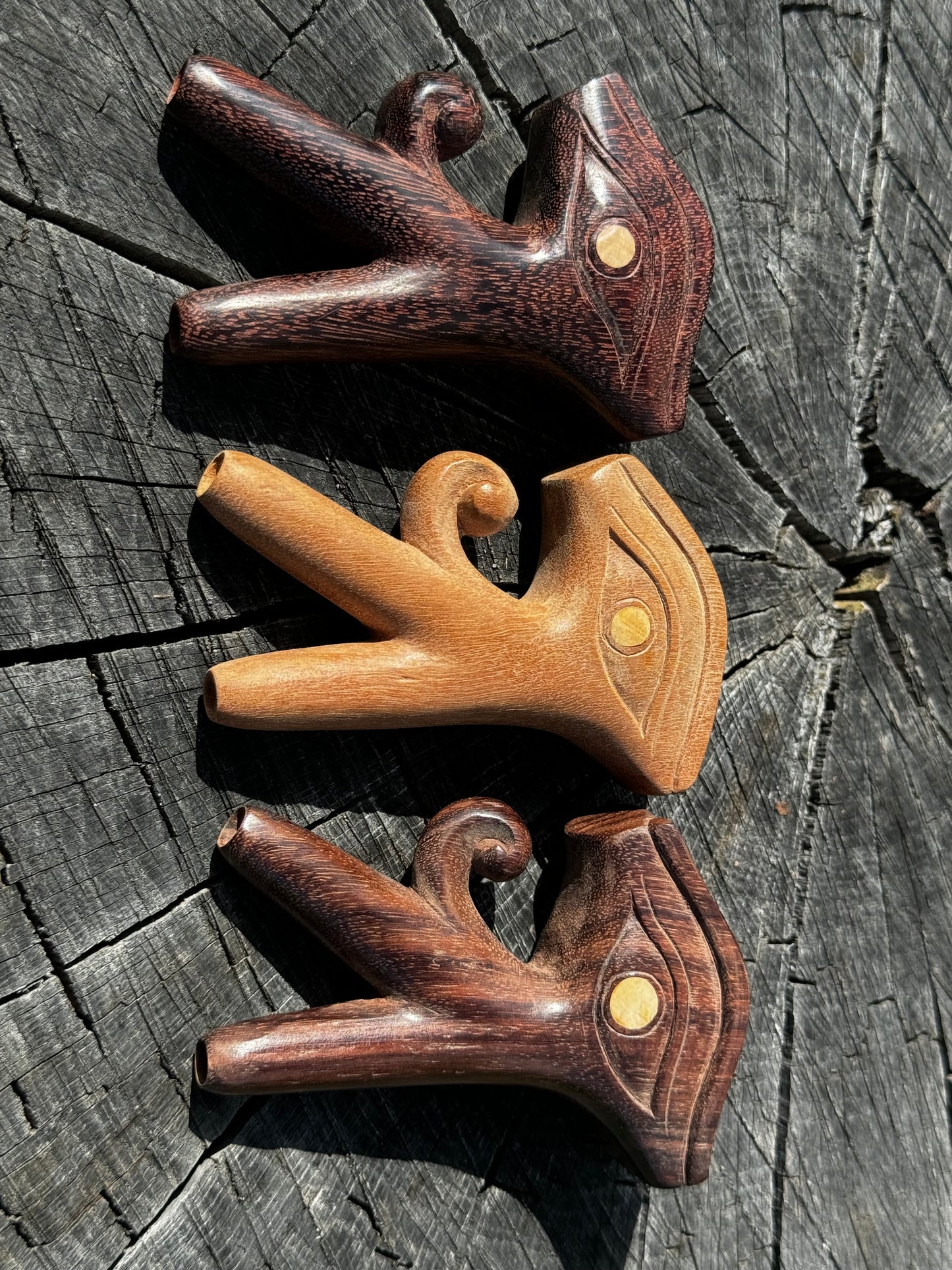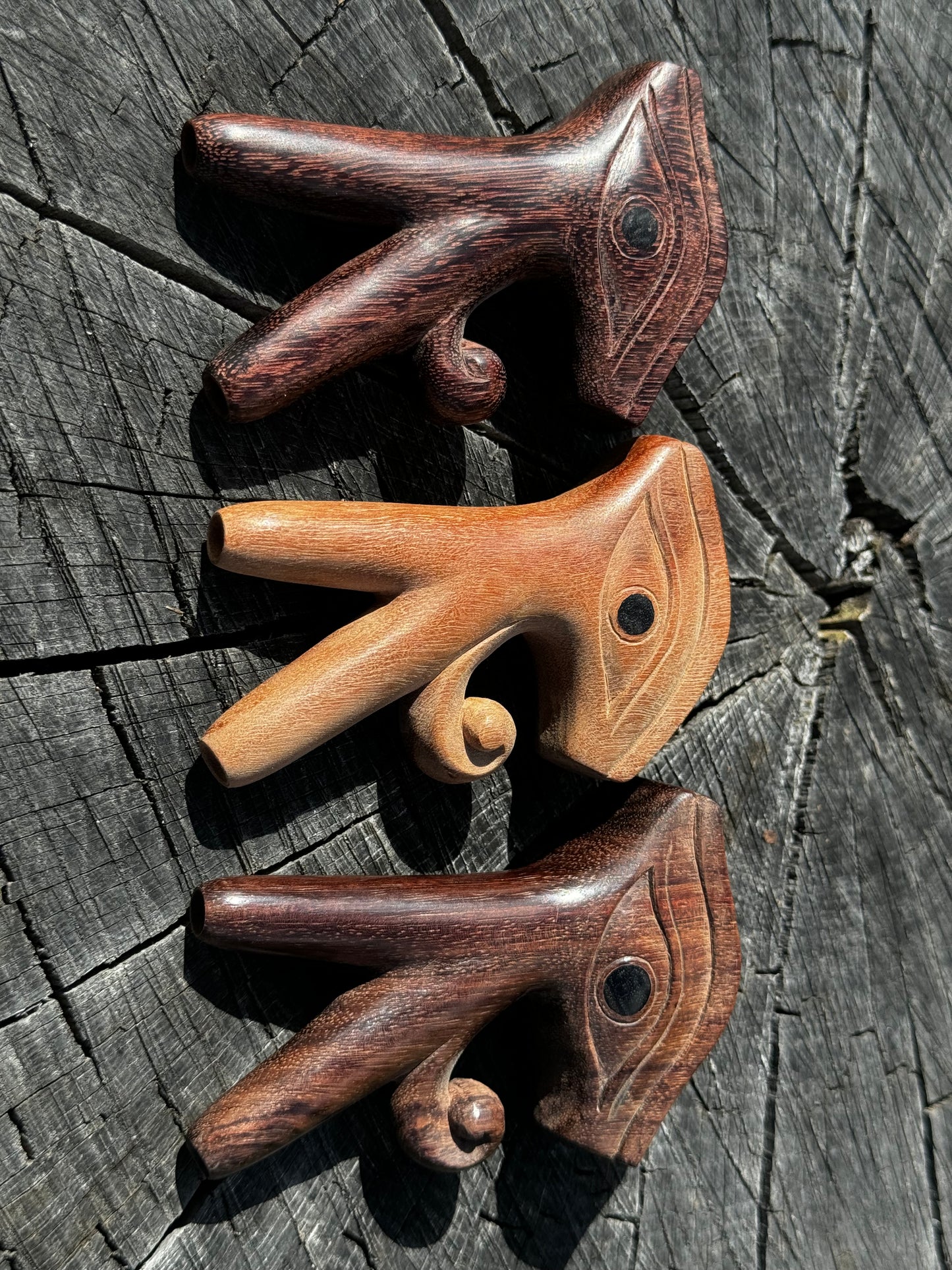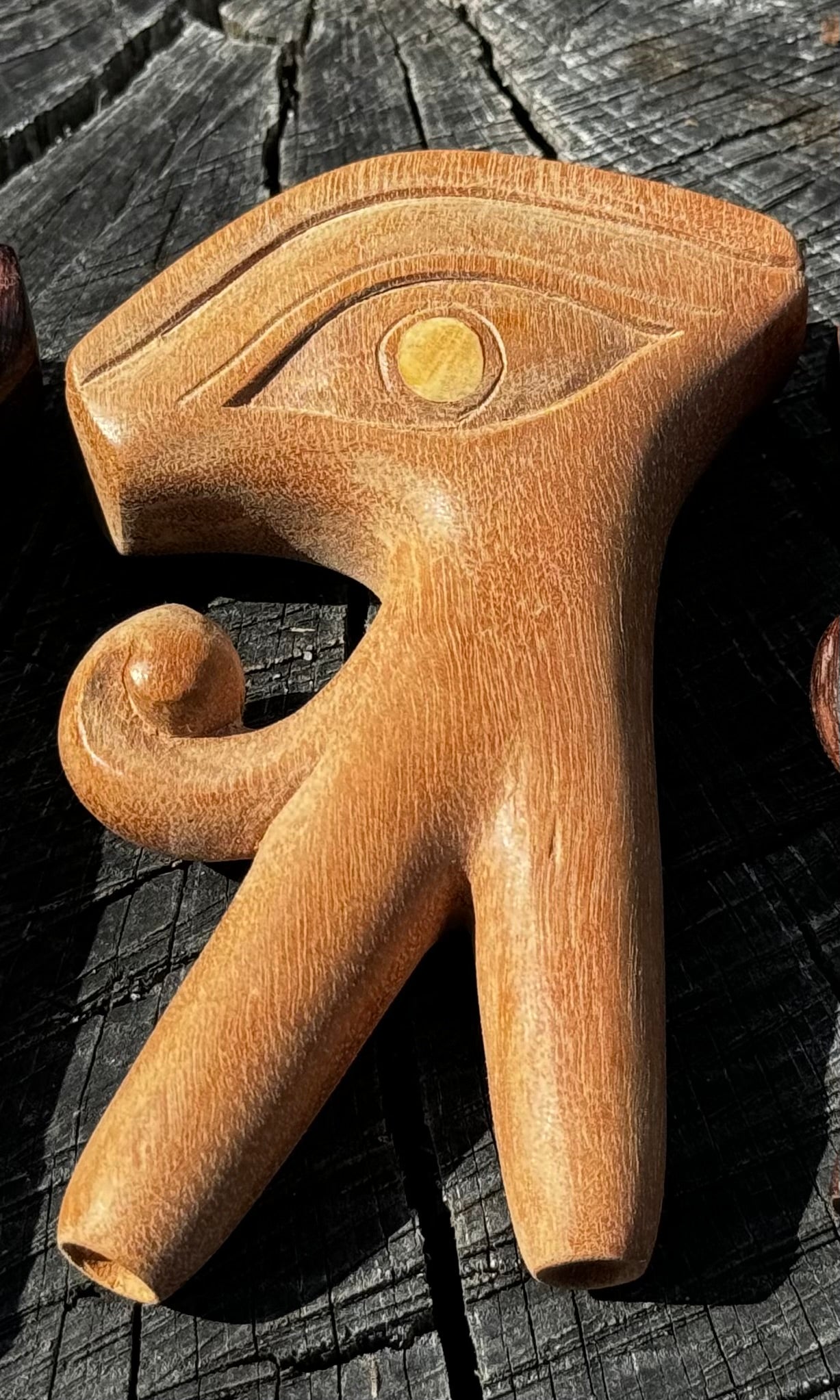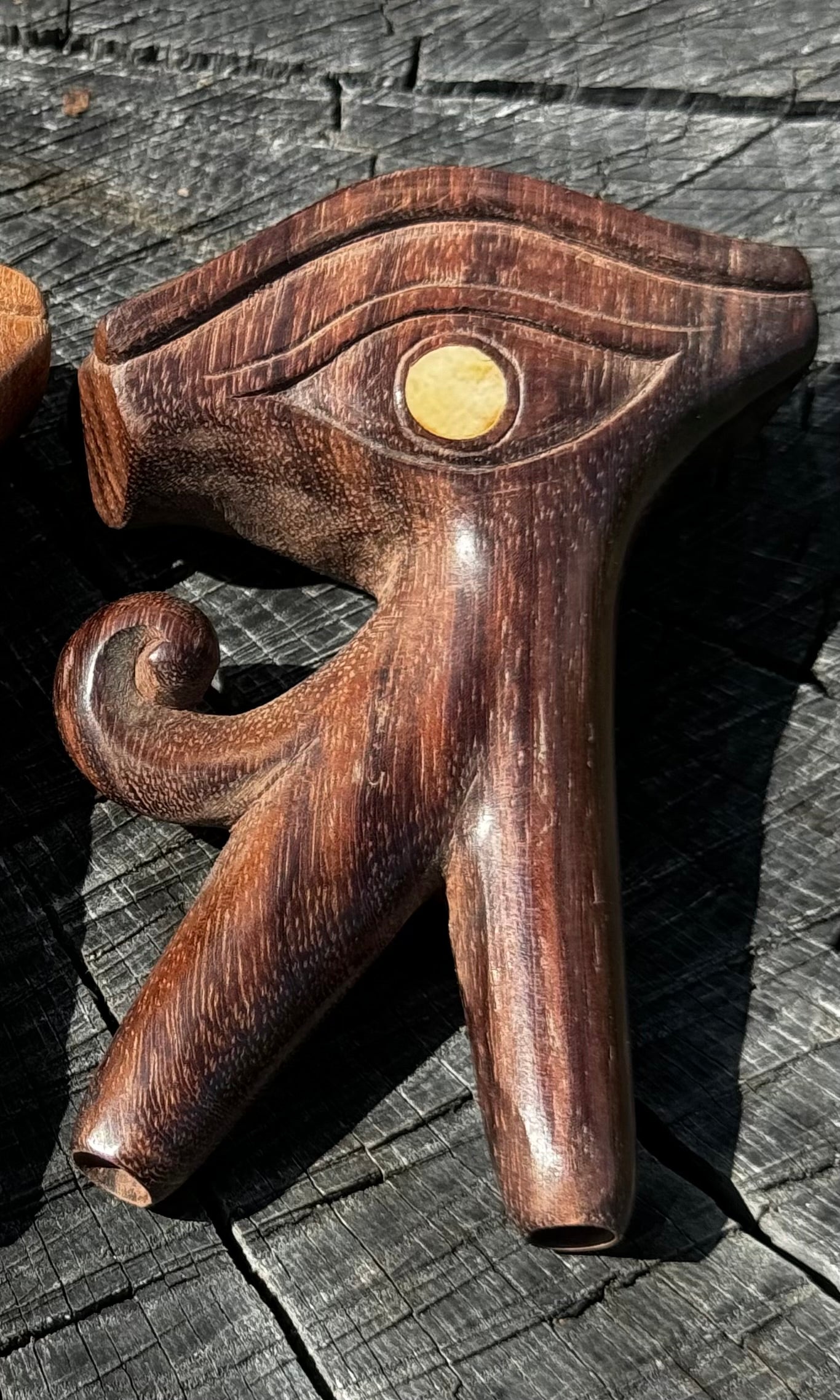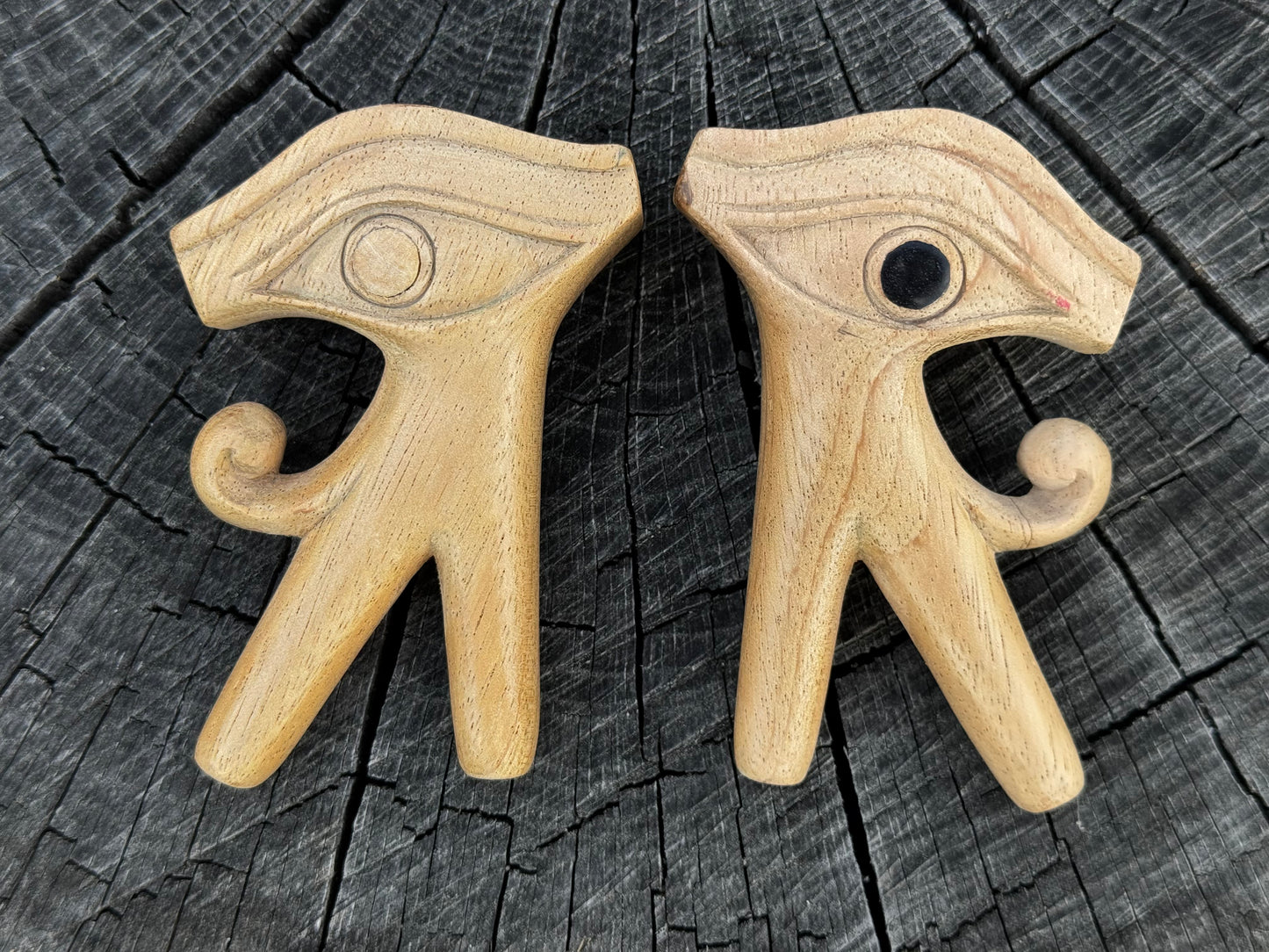Spirit Visions
Eyes of Ra & Horus (Egyptian Gods) Kuripes
Eyes of Ra & Horus (Egyptian Gods) Kuripes
Couldn't load pickup availability
This wonderfully crafted kuripe design is hand-carved from a single block of wood by indigenous artists. Use it for self-administering Hapé.
This design is a combination of the eye of Ra (typically depicted as the right eye), and the eye of Horus (typically depicted as the left eye). Additionally, each piece can be further differentiated between the two energies/ deities by having a black pupil on one side and a white pupil on the other. These are not colored by paint, but our actually a separate and additional piece of wood that is inserted into the main piece! 🔥
Ra, the ancient Egyptian sun god, is one of the most powerful deities in Egyptian mythology, embodying the sun’s life-giving force and representing creation, light, and order. Ra was believed to rule over all of creation, and as the sun god, he was associated with both the rising and setting sun, embodying the eternal cycle of life, death, and rebirth.
Horus, one of the most significant deities in ancient Egyptian mythology, symbolizes kingship, protection, and divine justice. Depicted as a falcon or a man with a falcon’s head, Horus is closely associated with the sky, the sun, and the moon. His eyes represent these celestial bodies: his right eye symbolizes the sun (Ra), and his left eye, the moon.
About the Eyes of Ra & Horus
The Eye of Ra and the Eye of Horus are two powerful symbols in ancient Egyptian mythology, each carrying distinct spiritual meanings tied to protection, healing, and divine power.
1. Eye of Ra
The Eye of Ra represents the fierce, protective power of the sun god Ra. It symbolizes authority, destruction of enemies, and protection. Often depicted as a fiery, aggressive force, the Eye of Ra was considered a weapon Ra used to maintain cosmic order and ward off chaos, often embodied by the serpent Apophis. It was also personified by goddesses like Sekhmet and Hathor, who served as Ra’s protectors and enforcers.
The Eye of Ra is a symbol of royal power and divine authority, associated with the sun’s destructive and life-giving forces. It guards against evil, protects the pharaoh, and ensures that chaos does not overcome the world.
2. Eye of Horus
The Eye of Horus (also called the Wedjat Eye) symbolizes healing, protection, and restoration. It originates from the myth of Horus, the falcon god, who lost his eye in a battle with Set, the god of chaos, to avenge his father Osiris. The god Thoth later restored Horus’ eye, making it a symbol of wholeness and regeneration.
Unlike the more aggressive Eye of Ra, the Eye of Horus is often used as an amulet for physical and spiritual healing. Its association with Horus, a god of kingship and justice, also ties the symbol to balance and protection. The six parts of the Eye of Horus were believed to represent the six senses and offer protection over all aspects of a person’s being.
Key Differences:
- The Eye of Ra is linked to Ra’s power over creation and destruction, offering divine protection through strength and dominance.
- The Eye of Horus represents healing, restoration, and balance, offering protective energy through wholeness and harmony.
Both eyes are potent symbols of protection, but their energies differ—one is a forceful guardian (Ra), and the other a healing guide (Horus). This powerful kuripe carries the balance of these two energies! Bring this powerful force into your life with this tool as a symbol of this new energy!
Share
